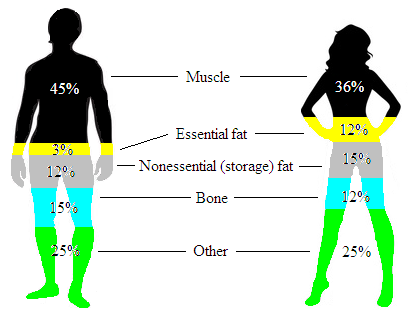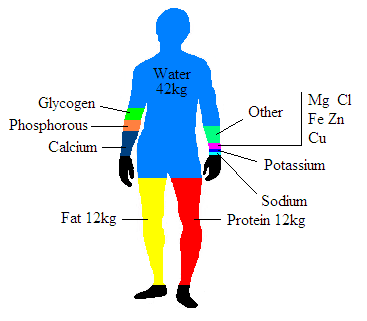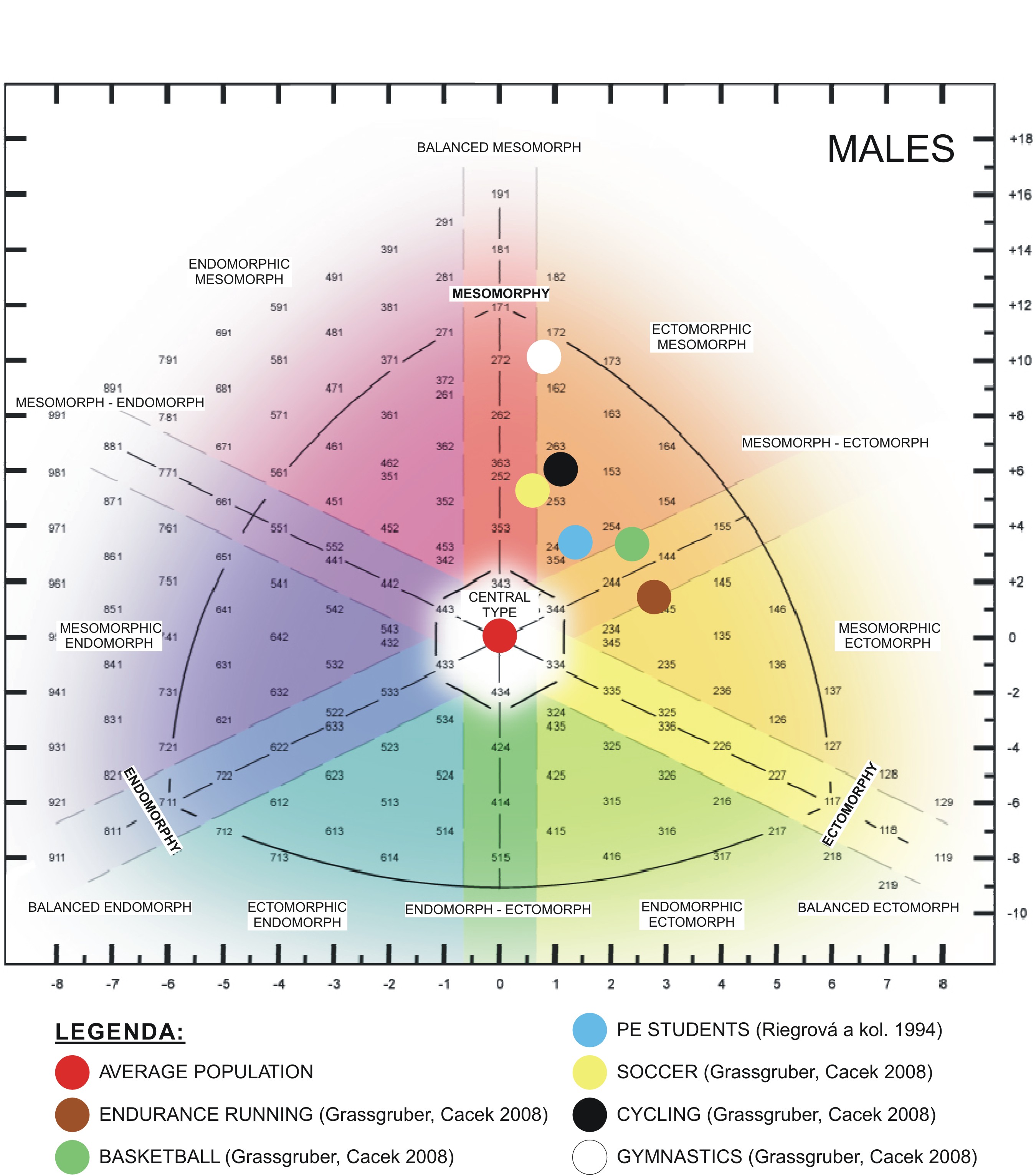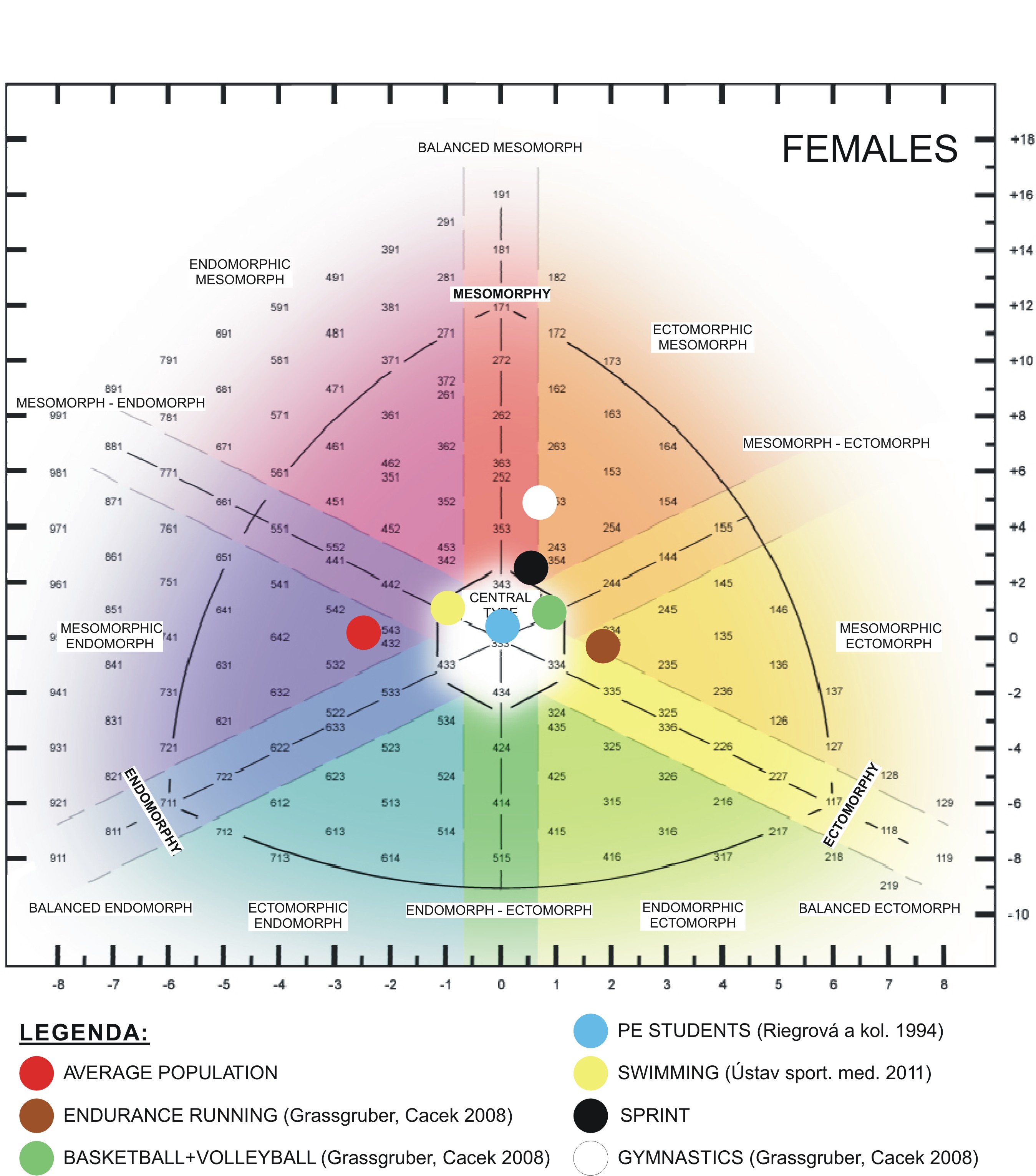
Body composition
The composition of a human body may be considered from different perspectives. The human anatomy model (Fig. 30) divides the body into the following systems:
- muscular
- skeletal
- adipose tissue (body fat)
- the others (inner organs, etc.)
Figure 30 Body composition – anatomy model

The chemical (Fig. 31) model consists of:
- water
- glycogen
- fat storage
- proteins
- minerals (Ca, P, Mg, Cl, Fe, Cu, etc.)
The method most widely used in the Czech Republic for detection of body composition is the one according to Matiegka. First of all, height and weight of an individual are measured, then width and circumferential measurements are taken. A calliper (a measurement device for skin folds) is used to detect the value of body fat. Individual items (skeletal, muscular, fatty and the others) are calculated using formulas.
Figure 31 Body composition – chemical model

Other methods for detection of body composition:
- underwater weighing
- X-ray (DXA)
- plethysmography
- measurement of skin folds
- bioelectrical impedance (photo)
Body structure, somatotype
The optimal body structure presents an elementary factor in many sports. The body structure is characterized by somatic parameters (length, width, circumference, etc.) Sports activity may affect some width and circumferential parameters especially through the development of muscle mass and reduction of the fatty part.
The body structure is also defined by its somatotype. Various somatotypes may be suitable for various sport disciplines (Fig. 32, 33). The most frequently used method is that of modification of the Sheldon procedure further elaborated by Heath and Carter.
Under this methodology the somatotype consists of 3 components:
- endomorphic component
- mesomorphic component
- ectomorphic component
In sports we usually encounter a developed mesomorphic component indicating development of muscles and robustness of the skeletal frame.
Figure 32 Somatotype - males

Figure 33 Somatotype - females

The body size is given by its height, weight, and surface.